(Dear Reader, I am skipping ahead to put this important bit {3:15} now)* |
|
Results 1 to 15 of 15
-
12-09-2011 09:19 AM #1DebraJane Achievements:










- Join Date
- Mar 2010
- LD Count
- 000
- Gender

- Location
- Adelaide, South Australia
- Posts
- 2,616
- Likes
- 968
- DJ Entries
- 138
Todd Murphy's 1st Lecture: God and the Brain
1st Todd Murphy Lecture: God and the Brain.
(1 hour 45 minutes)
This lecture is about the brains role in:*
visions of God*
near death experiences*
cases histories of people who've seen God*
And the God Helmet*
This is a discussion of the Persinger "God Helmet" (actually the Koren Helmet) and the Todd Murphy "8coil Shakti"
(0:00 to 4:28)*
Tod Murphy:*
Forum code:*
Good evening,*
Welcome to the first lecture in our series on Spirituality and the Brain. The theme of tonight’s talk is God and the Brain. I just want to start off by more-or-less jumping into it and giving you a fairly straight forward way of arriving at the conclusion that God, (whatever that means) and the brain actually do have a point of connection.*
If you look at an EEG, an Electroencephalogram something that displays brainwaves and you’re eating, you’re going to have one set of patterns that appear on it. If you’re falling asleep you’re going to have another. If you’re running full-tilt up-hill you’re going to have another set of brain wave patterns.*
Each human behaviour each way of thinking gives us a different set of brain wave patterns. So it’s not a very big step to think that if you’re somehow connected to God through prayer, through an actual vision of God, or by reflecting on your points of your faith in God, your EEG pattern your brainwave pattern is still going to have another pattern.*
This should come regardless whether you’re praying, thinking of God or even hearing words that remind you of God.*
So, just from this simple, straight forward way of thinking of it we arrive at the conclusion that God, (whatever that means to you) has some place in your brain or some effect on your brain. The two are not unrelated. That’s an important starting point. If we don’t take a moment to consider that we can kind of get lost in some theological concerns that might come up here.*
The understanding of the role of God in the brain or the brain in understanding God began quite a while ago. But one of the decisive observations about this came from the famousneurosurgeon Wilder Penfieldwho did his best work between the 1940s – 1960s. He actually elicited a number of what were called in those days’ psychical visions, out-of-body experiences, strange and even spiritual moments that came up not only for his epileptic patients but also for the patients on the operating table.*
He would stimulate the surface of they’re brain and all sorts of interesting things happened. He’s well known for this work. But he also recorded a case where one of his epileptic patients actually had visions of God, coming down from the sky, framed as if in a picture. This was published in the scientific literature which is what makes it such an important observation.*
And that one actually ties-down the notion that epilepsy, (a brain disorder) can have spiritual even theistic impact. The experience of God can occur during an epileptic seizure. (3:38)*
(3:38)*Dostoyevsky*who wrote about it in his book The Possessed, had seizures that included not so much clear visions of God but the experience of bliss and ecstasy that was so intense that he couldn’t attribute it to anything else.*
The next major step forward in this, and I’m skipping by a lot of research by some very excellent people, was accomplished by aDr. Michael A. Persinger*who is director of the (?) program and has been my mentor for about thirteen years. He was actually able to induce visions of God in the laboratory.*
He used a piece of equipment for this called the*Koren Helmetwhich has also gotten the nickname the God Helmet and we’ll be seeing it further along in this talk. (4:28)*EbbTide000's Signature.
My original username was debraJane, later I became Havago. Click link below!
What are Your Thoughts on This?
***
http://www.dreamviews.com/beyond-dre...houghts-2.html
-
12-10-2011 07:40 AM #2DebraJane Achievements:










- Join Date
- Mar 2010
- LD Count
- 000
- Gender

- Location
- Adelaide, South Australia
- Posts
- 2,616
- Likes
- 968
- DJ Entries
- 138
The only sacred thing is choice
EbbTide000's Signature.
My original username was debraJane, later I became Havago. Click link below!
What are Your Thoughts on This?
***
http://www.dreamviews.com/beyond-dre...houghts-2.html
-
12-11-2011 12:36 PM #3DebraJane Achievements:










- Join Date
- Mar 2010
- LD Count
- 000
- Gender

- Location
- Adelaide, South Australia
- Posts
- 2,616
- Likes
- 968
- DJ Entries
- 138
(4:28 - 9:28)
(4:28 – 9:28)*
One of the things that he did that helped him develop the God Helmet, (the Koren Helmet) was he developed a theory that allowed him to predict that this kind of thing should be possible in laboratory settings and I’ll be getting to the procedures for that in a couple of minutes. His most important contribution to understanding God and the brain or the science of spirituality came when he had an insight as to the origins of spirituality in human evolution.*
When our species first appeared as homosapiens our brains went through a couple of major changes. (…) Two of the most important were that two areas of the brain became larger, the frontal lobes which are concerned with the future, anticipation, extrapolation, expectation, planning, especially planning social things, thinking about how you relate to other people.*
And the other is the temporal lobes. The temporal lobes are primarily concerned with memory but they also have a number of other functions which I’ll be getting to shortly.*
(…) The*temporal lobes*of the brain are the source for*most spiritual experiences,*what are called in the scientific literature Religious and Mystic experiences. Dr Persinger knew this because of Dr Wilder Penfield’s work as well as the many reports that come from people with*temporal lobe epilepsy*that contained spiritual themes, comments, visions and so forth.*
Not a lot of that got into publication in the early days because the scientific community was not as open to it as they are now.*
What Dr Persinger realised was that the only way we could understand the facts of our death is to think about it. No one with the exception of very few people who have had Near Death Experiences, who’ve been dead and come back, been resuscitated or revived after being dead, has been dead. So the only way that most people can understand that they’re going to die is to think about it and arrive at the verbal construction, “I will die”.*
And from there think about it and take it a bit personal.*
It works in lots of different ways and one of them is something like this:*
That person has a father, their father died. That (other) person had a father, their father died. I’m a father, o o it’s going to happen to me too.*
This person got old and then they died. Another person got old and then they died. I look in the stream, in those days there probable were no mirrors, were talking early in our evolutionary history, and I look and see that I’ve got wrinkled skin and I’ve got grey hairs and “Oh my! I’m going to die too”.*
Taking it personally is very different from understanding the fact of death. Engaging the thought that one’s own person will die takes some time. And every parent has the moment when there 3 or 4 year old asks them, “Daddy does everyone have to die?” That’s the moment when they’re beginning to take it personally.*
The reason that human beings can do this is and especially at such an early age. My own child asked me this question when she was 3. Is because, the temporal lobes are now more able to remember more kinds of information and process our memories far more extensively than we had earlier in our evolutionary history.*
The frontal lobes are now able to extrapolate into the futurein more ways, and in more abstract ways, than they had been previously. So this very (actually from the point of view of your average 3 year old) unlikely experience, that of personal death can be arrived at as a conclusion. And so people tend to know that they are going to die.*
We tend to suppress these thoughts and this suppression is buttressed by nearly every religious tradition in existence. They tell us that we are not going to die. We’re going to move-on, death is not death, death is an awakening, death is a transition to the spirit world, death is going home, death is to be with the Gods, death is to join Our Father in Heaven.*
But no matter how religions process this, and there seems to be no culture on this Earth that does not have a religion, that has this concept embedded in it somewhere, we are allowed to suppress the fact of our own personal mortality and what this does is reduce*“Death Anxiety”.*
(9:28)*EbbTide000's Signature.
My original username was debraJane, later I became Havago. Click link below!
What are Your Thoughts on This?
***
http://www.dreamviews.com/beyond-dre...houghts-2.html
-
12-12-2011 06:51 AM #4DebraJane Achievements:










- Join Date
- Mar 2010
- LD Count
- 000
- Gender

- Location
- Adelaide, South Australia
- Posts
- 2,616
- Likes
- 968
- DJ Entries
- 138
(9:28 - 11:28)
what this does is reduce*“Death Anxiety”.*
(9:28)*
Death Anxiety*is a very good thing because it encourages to think of all the different ways we can be killed and avoid them. So if we understand that jaguars live high in the trees and we’re walking through the forest we’re more likely to take a look up once in a while and make sure there’s nothing there that offers a threat.*
If famine takes lives and the water supply gets scarce and we know that makes it hard to find food. Then we’re more likely to take notice of any unlikely food sources that we would have passed by earlier and if the food supply does run out we know where to go to get something that isn’t so appetizing but at least will keep us nourished.*
So, we anticipate ways of dying and we avoid them. This helps us survive.*
But the stress involved in continually being continually aware of your own personal death can be quite unnerving. If you think that you can think of your own personal death with out any stress or psychological discomfort try the next below it and see how that feels. Pretend your doctors told you you’ve just got terminal cancer, see how that feels.*
If you have no personal stress about the moment of death it’s probably because you’ve really taken onboard that you’re not going to die as offered by your religion. So, spirituality extends our lives by helping us live with less stress, live without the stress that goes with death anxiety. At the same time as we can maintain a regular awareness of the fact and the reality of death and take steps to avoid this.*
And that is a very complicated arrangement for a mind of any kind to live with. But human evolution has allowed us the luxury of saying alive and allowed us the luxury of not being worried about dying. And that makes life very much easier to live and makes it last a bit longer then it would otherwise. So, Dr Michael Persinger concluded that we’re predisposed to be in a healthy kind of denial about the fact of our own death.*
(11:38)*EbbTide000's Signature.
My original username was debraJane, later I became Havago. Click link below!
What are Your Thoughts on This?
***
http://www.dreamviews.com/beyond-dre...houghts-2.html
-
12-12-2011 07:16 AM #5DebraJane Achievements:










- Join Date
- Mar 2010
- LD Count
- 000
- Gender

- Location
- Adelaide, South Australia
- Posts
- 2,616
- Likes
- 968
- DJ Entries
- 138
Hope this takes I am sending from phone
9:38 - 16:05
we’re predisposed to be in a healthy kind of denial about the fact of our own death.*
(11:38)*
And, the experience of God the firsthand vision of God, what the Hindu’s call Darshan, what some Christians call the Unio Mystica, is a real enough experience that we can begin by accepting that it happens to some people. That all the people who have said that they have met God face-to-face aren’t lying they are actually giving what scientist can take on board as anecdotal reports.*
An important question is, “Why are our brains able to produce this experience?”*
One answer is that there actually is a God, a creator of the Universe that as a personal relationship with each one of us and that we are able to connect to through God’s will.*
The other possible explanation and the one I will be working with to night is that our brains are able to produce this experience for us. And that brings an immediate question, “Why”. It’s a very unlikely thing to imagine that our brains are predisposed through their wiring and that we are able through our evolutionary history to have a face to face meeting with what feels to us like the creator of the universe, the source of love and bliss and acceptance, and all the glorious attributes that go with God.*
And the answer is, “We’re wired for it”.*
(13:00)*
It happens naturally during the death process and the evidence for this is in the near-death-experience. And it is important for me to say, now, that I accept near-death-experiences not as any kind of brain blips or a malfunction of the brain that happens when we’re dying. I think that near-death-experiences actually reveal to us the Death Process as experienced by human beings.*
What people tells us when they tell us about their near-death-experiences or when we read about them in the books on the subject actually reflect something from the wide range of possibilities that people have for there own individual deaths. And the experience of God is probably more common it that context than in any other context.*
Hundreds, thousands of monks and nuns prayed to meet God face-to-face and their prayers for whatever reason have gone unanswered. Hundreds of people, thousands of people have died and come back to life and reported meeting God and they never prayed for it at all.*
So, I think that the process that much more reliably produces the direct experience of God is a better place to look for evidence about the experience than the world’s religious traditions.*
And, what we have on the screen now is a picture of the Koren Helmet also known as the God Helmet and this is the apparatus used to produce experiences of God. And next to it we have a picture of Stan Koren who actually developed the first one working with Dr. Michael Persinger.*
(14:46)*
Forum code:**Forum code:*
And, to start off explaining how the brain produces the experiences of God I need to tell you that according to Dr Persinger’s hypothesises and theories We actually have*“Two Senses of Self”*one for each side of the brain.*
Forum code:**Forum code:*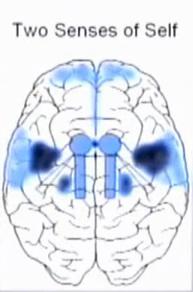
*
The Self on the left-side of the brain where the language centres are, is the “linguistic” sense of Self. That’s the self that thinks in words and the Self that is impacted upon by words. It’s the dominant sense of self. It’s the Self that we usually are in most of our waking moments in what scientist call normal states of consciousness.*
The Self on the right side of the brain is a much more SILENT sense of Self. There are no language centres on the right side of the brain. And what that means is that for us to be in normal states of consciousness where our linguistic skills are available for us to relate to other people.*
Forum code:*
We’re a linguistic species, we use words. We have a constant stream of inner-dialog. But we’re also a social species and we primarily relate to other people through words. This may not be the highest form of relating but it’s the most common form.*
(16:05)*EbbTide000's Signature.
My original username was debraJane, later I became Havago. Click link below!
What are Your Thoughts on This?
***
http://www.dreamviews.com/beyond-dre...houghts-2.html
-
12-13-2011 12:15 AM #6DebraJane Achievements:










- Join Date
- Mar 2010
- LD Count
- 000
- Gender

- Location
- Adelaide, South Australia
- Posts
- 2,616
- Likes
- 968
- DJ Entries
- 138
Visitor Experience (!!!)
Tuesday 13-Dec-11 (16:05)*
And it’s the one you use when you’re applying for a job, when you’re saying hello to your neighbour, when you’re having the ordinary, garden variety, day-to-day relatings that make up our social reality. So, we have to be the linguistic Self in order that we can be integrated with other people. And the usual way we relate to other people is one way or another, through our cultures.*
And our cultures demand that we be able and available for linguistic tasking, able and available to use words when relating to other people at any time.*
Now, the other thing about the linguistic sense of self, and here we have an illustration that shows you the two senses of self on the two sides of the brain as well as the language centres, Broca’s area and Wernicke’s area. For those of you who are interested, Broca’s area produces speech and Wernicke’s area understands speech.*
Wernicke’s centre in brain*
Forum code:*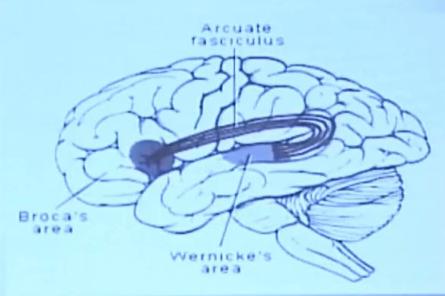
(17:11)*
And, ordinarily these two senses of self are quite seamlessly integrated. So even though we are the sense of self on the left, we get lots and lots of input all the time from the sense of self on the right. And when I say self in this context I mean the word in a sense that matches the (?) self-esteem, so that our self-esteem rises and falls according to the words we hear.*
If someone says to you, “You’re cute” we feel a bit better about ourselves. If our boss says, “You’re fired” we feel terrible. If another employer says, “You’re hired” we feel great once again.*
Our self-esteem impacts on our emotions and there are very few things that go on in the inner landscape of human consciousness than our emotions. Almost nothing looms larger, (than our emotions). And our emotions change radically according to the words that we hear.*
This is an important piece of understanding to take onboard, to understand that we are our linguistic sense of self. We are the left hemispheric one as the dominant sense of self.*
Now, ordinarily like I said, the two work together quite seamlessly. But once in a while communication between the two breaks down, which appears in this illustration, as having the lines that connect them sort of broken-up a bit. And this can happen for a number of reasons. The communication between the hemispheres can lose its coherence, they can fall out of phase with one other, one hemisphere, because of some circumstance can stop working as well as the other and we can find that for a moment we don’t quite feel intact.*
We absorb ourself in a book, and then someone calls to us and we have to pull our attention out, and there is a brief moment where we sort of collect ourselves, and bring ourselves back to that social being that we have to be in order not to be alone with the book, but rather connecting and relating to someone else.*
The relating is not completely automatic and in moments when we have to grope for it, umm, though we can find, if you’re looking carefully enough, that your sense of self is kind of broken-up a little bit.*
When the two actually fall out-of-phase or lose there coherence in a more extreme way, both of them continue to operate but one of them is no longer available for us. It’s broken it’s communication with the other. And what happens is that it’s perceived as a separate being that exists outside of ourselves, outside of our bodies space.*
And this creates the basis for a whole class of experiences called*“Visitor Experiences”.*EbbTide000's Signature.
My original username was debraJane, later I became Havago. Click link below!
What are Your Thoughts on This?
***
http://www.dreamviews.com/beyond-dre...houghts-2.html
-
12-15-2011 11:56 AM #7DebraJane Achievements:










- Join Date
- Mar 2010
- LD Count
- 000
- Gender

- Location
- Adelaide, South Australia
- Posts
- 2,616
- Likes
- 968
- DJ Entries
- 138
Transcription to (20:44)
Wed 14-Dec-11 (-20:44)
And visitor experiences are any kind of experience where we’re actually being visited or communicating with or even just seeing a non-physical being. In its very mildest form it’s called “The Sensed Presence”. And it refers to the reasonably ordinary experience, (not everyone gets it but most people have had it a few times) of feeling that there’s someone standing behind you but when you turn to look, there’s no one there.*
And when you feel that presence, what you’re actually feeling, is your subordinate sense of self emerging into the awareness of your dominant sense of self.*
Separate Self*
Forum code:*
(19:55)*
So that in that moment you are actually, (in a kind of existential sense) two beings at once. The most intense of these is God, and now were back to the God Helmet.*
(20:44)*EbbTide000's Signature.
My original username was debraJane, later I became Havago. Click link below!
What are Your Thoughts on This?
***
http://www.dreamviews.com/beyond-dre...houghts-2.html
-
12-16-2011 06:37 AM #8DebraJane Achievements:










- Join Date
- Mar 2010
- LD Count
- 000
- Gender

- Location
- Adelaide, South Australia
- Posts
- 2,616
- Likes
- 968
- DJ Entries
- 138
Thursday 15-12-11 (20:44 to 20:52)
So, in that moment you are actually, (in a kind of existential sense) two beings at once. The most intense of these is God, and now were back to the God Helmet. The Koren Helmet.*
(20:52)*
Todd Murphy’s mentor for over 13 years, Dr Michael Persinger*
Forum code:*
Below is YouTube that I am Transcribing from Netzone Internet Café
*
(1:45:47) 7,477 views so far*
This post got deleted yesterday so here it is again minus the link.EbbTide000's Signature.
My original username was debraJane, later I became Havago. Click link below!
What are Your Thoughts on This?
***
http://www.dreamviews.com/beyond-dre...houghts-2.html
-
12-16-2011 08:50 AM #9DebraJane Achievements:










- Join Date
- Mar 2010
- LD Count
- 000
- Gender

- Location
- Adelaide, South Australia
- Posts
- 2,616
- Likes
- 968
- DJ Entries
- 138
20:52 to 21:37
Friday 16-12-11 (20:52 - 21:37 )
(0:20:52)*
And the way it works is it applies signals, magnetic signals that are derived from electrical signals that either come from the brain of have an impact on the brain. It relies on the same kinds of mechanisms that produce any other “Visitor Experience”.*
(0:21:08) image The Koren Helmet*
Forum code:*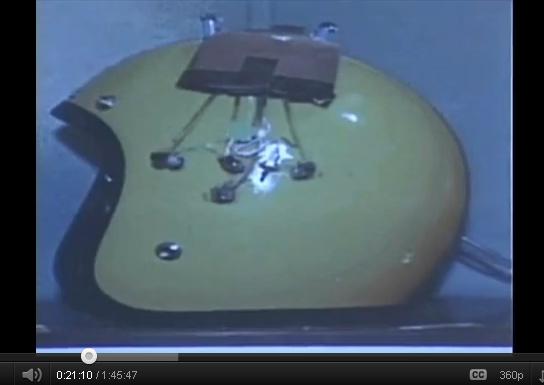
(By) disconnecting the two sides of the brain (and) getting them to perform an act independently of one another.*
(0:21:16)*
And it works by applying magnetic copies of electrical signals that either come from the brain through EEG or that the brain is known to respond to. And I’ll be saying more about those signals in a moment.*
One of the signals is derived from the Amygdala.*
(0:21:37)*EbbTide000's Signature.
My original username was debraJane, later I became Havago. Click link below!
What are Your Thoughts on This?
***
http://www.dreamviews.com/beyond-dre...houghts-2.html
-
12-16-2011 09:04 AM #10DebraJane Achievements:










- Join Date
- Mar 2010
- LD Count
- 000
- Gender

- Location
- Adelaide, South Australia
- Posts
- 2,616
- Likes
- 968
- DJ Entries
- 138
21:37 to 23:23
Saurday 17 Dec 2011
Amygdala*
(21:37 to 23:23)*
One of the signals is derived from the Amygdala a structure deep in the brain, deep in the temporal lobes of the brain. It’s a very, very active structure. It never shuts down completely and it actually uses more blood than any other part of the brain. It has lower firing thresholds than any other part of the brain.*
It takes less electrical input to get the Amygdala to respond than any other part of the brain.*
And the Amygdala is a very social structure. It helps us relate to other people when we look at other people and their facial expressions, it tells us what other people’s moods are.*
It changes in most mood disorders; nearly any emotional disorder will have an Amygdala that is larger or smaller on one side or the other. Sometimes the differences can be quite dramatic.*
It carries emotional memory.*
Most memories are embedded, retrieved, preserved, consolidated and created in different areas of the brain. But the Amygdala is actually capable of remembering things that have sparked strong emotional responses to us, what we call “emotional memories”,*
Now the Amygdala is very highly specialized. On one side of the brain, (according to the research at (?) under Dr Persinger which isn’t the same as some others), on one side, on the right side it produces*fear*and in its own independent action the Amygdala on the right can produce a state of fear that’s so intense that people feel a sense of*impending doom*.*
(0:23:00)*
Amygdala image:*
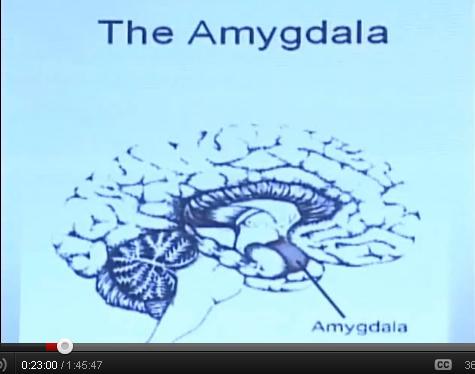
And the Amygdala on the left is specialized for positive emotions, things like elation, happiness, joy and even the kind of bliss that we associate will religious*ecstasy*.*
And the way the Koren Helmet works I’ll be getting to in just a minute but for now let me go over very briefly the experiences that the Koren Helmet has been able to produce.*
(0:23:33)EbbTide000's Signature.
My original username was debraJane, later I became Havago. Click link below!
What are Your Thoughts on This?
***
http://www.dreamviews.com/beyond-dre...houghts-2.html
-
12-17-2011 04:55 PM #11DebraJane Achievements:










- Join Date
- Mar 2010
- LD Count
- 000
- Gender

- Location
- Adelaide, South Australia
- Posts
- 2,616
- Likes
- 968
- DJ Entries
- 138
23:33 to23:53
Sunday 18 Dec 2011
And the way the Koren Helmet works I’ll be getting to in just a minute but for now let me go over very briefly the experiences that the Koren Helmet has been able to produce.*
(0:23:33)*
Visions of God*
Out of Body experiences*
Seeing into a black inner-space that’s been nick-named the void that can also occur in near-death experiences*
23:43 image*

And here we have actually three pictures. One of then is Stan Koren wearing the latest version of the apparatus, one of them is the yellow Koren Helmet the one that was used in so many experiments and the one on the right is a commercially available device which you can you can learn about from, (Sorry DreamViewer's I deleted the link to prevent this post being deleted by mods )
*known as “Shakti” which is a Hindu word which just means “Energy” it’s also the name of a Goddess.*
Other people have had*
Visions of Angels*
Visions of Demons*
Moments of Bliss*
Terror*
Seeing lights (including little floaty lights)*
And had very powerful tingly, electrical sensations running through their body.*
So, the God Helmet does not produce visions of God it produces lots and lots and lots of altered states, and visions of God is only one of them.*EbbTide000's Signature.
My original username was debraJane, later I became Havago. Click link below!
What are Your Thoughts on This?
***
http://www.dreamviews.com/beyond-dre...houghts-2.html
-
02-10-2012 03:00 PM #12DebraJane Achievements:










- Join Date
- Mar 2010
- LD Count
- 000
- Gender

- Location
- Adelaide, South Australia
- Posts
- 2,616
- Likes
- 968
- DJ Entries
- 138
To continue
Lecture 1, (from 23:43 to 25:04)
So, the God Helmet doesn't produce visions of God. It produces lots and lots and lots of altered states, and visions of God constitute only one of them.
(23:43)
And in order to use this or any other technology to produce an experience as dramatic as that, you actually need reasonably precise experimental conditions. Above all, this means complete silence.
e:*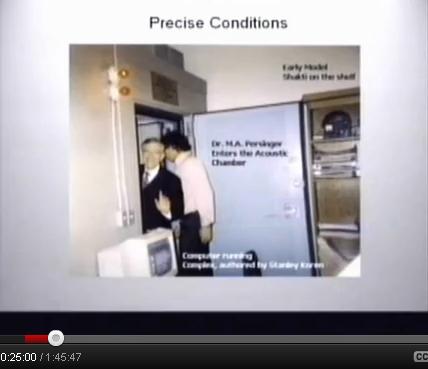
(Above) We see Dr M. A. Persinger entering the acoustic chamber, the absolutely silent chamber, as well as as a computer at the bottom of that picture running a program called, "Complex" which is authored by Stan Koren and which drives a computer to actually produce the signal.
The commercial device, "Shakti" works with an ordinary computer sound card.
The coils for the Koren Helmet, (the magnetic coils) are located over the temporal lobes.
This isn't the arrangement,
Forum code:*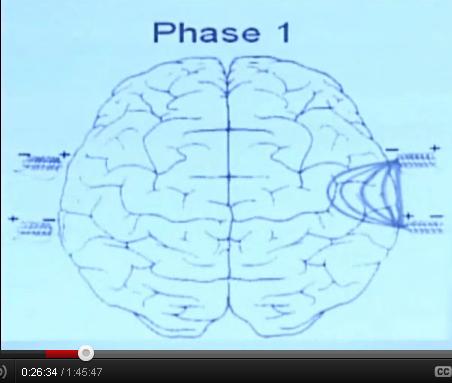
but seen from above, this picture shows approximately where those magnetic coils go, above the temporal lobes, which is located directly above the ears, to about two inches above the ears.
And as I mentioned earlier the temporal lobes are the source for most spiritual, religious and mystic experiences. At least that's what the brain stimulation evidence is telling us. And that kind of evidence continues to mount-up rather impressively.EbbTide000's Signature.
My original username was debraJane, later I became Havago. Click link below!
What are Your Thoughts on This?
***
http://www.dreamviews.com/beyond-dre...houghts-2.html
-
02-11-2012 05:11 PM #13
I didn't find the first two lectures that interesting. Sure he provides a lot of information, all about the different parts of the brain and what they do, I just don't find it very useful. There's nothing there I can apply to dreaming or that I can use to perfect any PSi abilities.
I'm into his third lecture, where he describes what happens during enlightenment. The way he describes it, he makes it sound like some sort of brain damage. Enlightened people can't feel fear, and the fear response is instead redirected to the bliss response. This does not sound like a good thing. You certainly wouldn't want an enlightened person looking after your kids if that's the case!
-
02-11-2012 05:17 PM #14D.V. Editor-in-Chief


- Join Date
- Jun 2006
- LD Count
- Lucid Now
- Gender

- Location
- 3D
- Posts
- 8,263
- Likes
- 4139
- DJ Entries
- 11
Fear is a tenuous word to use here. It would be more accurate to say they cannot feel panic, because they are not blinded by anxiety and can act more appropriately, with greater awareness.
Everything works out in the end, sometimes even badly.

-
02-14-2012 12:51 AM #15
Well, after 7 and a half hours of lectures, I came away with simple little psi experiment.
Apparently it's fairly easy to get someone to say a word of your choosing if you picture them saying it in their own voice in your mind. I'll be experimenting with this for sure. I just wonder if you have to be with the person for it to work. Say Obama was giving a speech live on TV, could I make him say "penis"? Oh what fun I would have if I could!
Similar Threads
-
Affect of Sleeping Positions: Left Brain vs Right Brain
By The Cusp in forum General Dream DiscussionReplies: 45Last Post: 08-04-2012, 08:31 PM -
Todd Murphy Lecture 2: Darwinian Reincarnation
By EbbTide000 in forum Beyond DreamingReplies: 8Last Post: 12-19-2011, 09:06 AM -
Subconscious (or right brain?) withholding info from conscious (or left brain?).
By Rawracookie in forum Extended DiscussionReplies: 14Last Post: 04-03-2011, 03:10 AM -
Brittany Murphy died
By hellohihello in forum The LoungeReplies: 28Last Post: 12-23-2009, 12:01 AM -
Anyone See Sweeney Todd?
By AmazeO XD in forum EntertainmentReplies: 10Last Post: 01-08-2008, 03:20 AM




 1Likes
1Likes LinkBack URL
LinkBack URL About LinkBacks
About LinkBacks




 Reply With Quote
Reply With Quote

Bookmarks